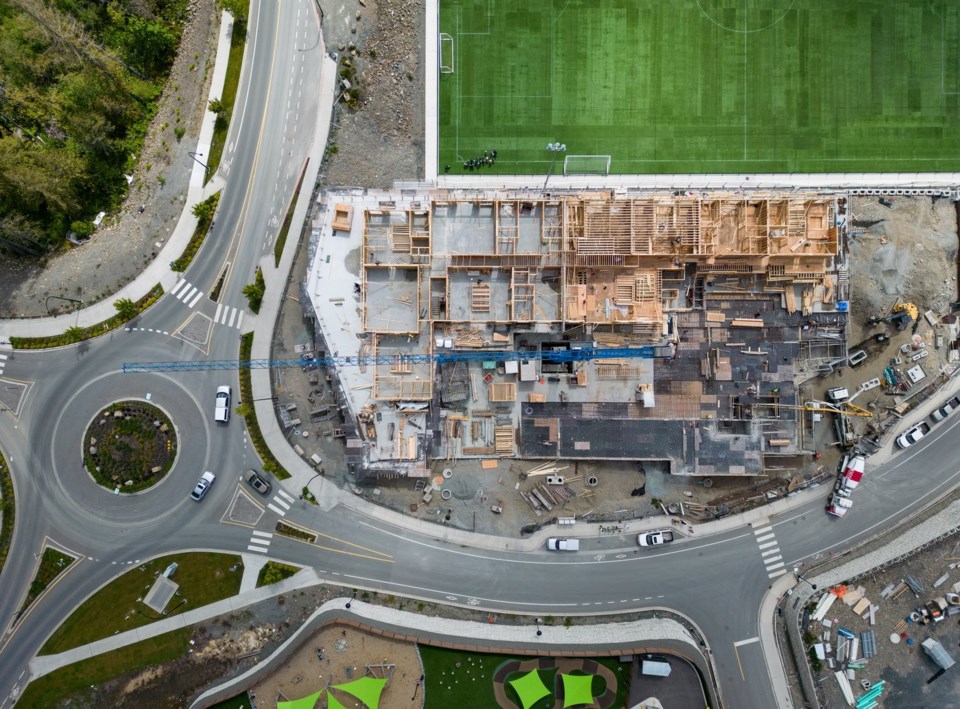As Canada aims to build homes faster, both the public and private sectors will need to boost spending on municipal infrastructure, a new report from the Canadian Urban Institute says.
The report, funded by the Canada Infrastructure Bank, estimated the average cost of infrastructure needed to support housing likely exceeds $100,000 for each newly built home. That includes funding for resources such as public transit, roads, water lines, schools, fire halls or recreational facilities.
The total cost of housing-related infrastructure doesn't constitute an "immediate price tag," said report author Michael Fenn, Ontario's former deputy minister of municipal affairs and housing. But he said coming up with a plan to finance the needs of residents is a crucial element to solving Canada's housing crisis.
"Some of that infrastructure is required right away. I mean, you have to flush a toilet, you have to turn on the taps in a new house. But other infrastructure is a little farther out," he said in an interview.
"We need to be conscious of the fact the infrastructure has to be put in place. Without the infrastructure, all the efforts we're making to accelerate housing production will not come to fruition."
The Canada Mortgage and Housing Corp. forecasts Canada will require an additional 3.5 million housing units by 2030, on top of the 2.3 million already projected to be built, to restore affordability to levels seen in 2004.
That level of increased housing starts — more than 500,000 homes annually — is equivalent to building a new city the size of Calgary each year, for seven years, noted Fenn, who has also served as a municipal chief administrator in Hamilton and Burlington, Ont.
Canadian Urban Institute CEO Mary W. Rowe cautioned there's "no silver bullet" to achieving the goals outlined in the report.
"Obviously, we've made this mistake before where we build housing units without the amenities, without the servicing that's required, and then it ends up biting you in the backside not too long after," she said in an interview.
"We need to figure out how to get other sources of investment into the underlying conditions around which housing needs to be built so that you actually have all the necessary infrastructures that are also part of it."
While some new housing will benefit from pre-existing infrastructure, the report said there are barriers to financing newly required projects.
For example, municipalities are often reluctant to either incur debt or pass along capital costs through property tax hikes for political reasons.
In some cases, growth is stifled by municipalities insisting developers shoulder the financial burden by pre-paying for the full capital cost of long-life infrastructure. The report noted there is also municipal opposition toward leaning on the private sector to deliver public infrastructure, especially if it involves transferring ownership or control.
It proposed multiple alternatives, such as moving away from requiring pre-paid development charges to an approach that provides secured payments over the lifetime of the asset.
Municipalities should also develop new financing tools that allow them to share the costs of infrastructure among those who benefit from it, including developers, the report recommended. It said developing tools such as land value capture and tax increment financing can help cities deliver more services.
Other recommendations include leveraging private capital to invest in public infrastructure through measures such as utility and development corporations. It said financial risks should be shared with institutional investors that are in a better position to absorb them.
"It's kind of an all-hands-on-deck discussion," said Rowe.
"We have to find all sorts of other mechanisms to get both public capital and private capital, institutional capital ... and municipalities have to be at the core of that."
Fenn added it's important that smaller communities don't get forgotten amid the push for more infrastructure funding, even if more housing development is concentrated in larger cities.
"The housing crisis is probably mostly located in metropolitan areas but that doesn't mean we shouldn't be doing something to help the infrastructure situation in the rest of the country," he said.
"That means doing it in a way that's easier for smaller municipalities to secure financing, to take some of the red tape and complexity out of it ... which they're in many cases, they're not in a position to shoulder."
This report by The Canadian Press was first published June 12, 2024.
Sammy Hudes, The Canadian Press


